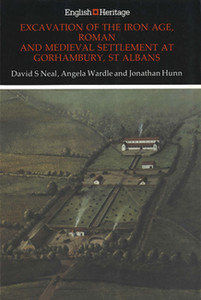English Heritage Archaeological Monographs
English Heritage, 2014. https://doi.org/10.5284/1028203. How to cite using this DOI
Data copyright © English Heritage unless otherwise stated
This work is licensed under the ADS Terms of Use and Access.
Primary contact
Historic England
The Engine House
Firefly Avenue
Swindon
SN2 2EH
Resource identifiers
- ADS Collection: 1416
- DOI:https://doi.org/10.5284/1028203
- How to cite using this DOI
Excavation of the Iron Age, Roman and Medieval settlement at Gorhambury, St Albans
Neal, D., Hunn, J., Wardle, A.
English Heritage (1990)
Abstract:

Gorhambury, just north of Verulamium, was the site of a substantial Roman villa complex which was excavated between 1972 and 1982 as part of a programme designed to test the interrelationships between villa sites in the Verulamium area and to examine trends in their growth, decline and prosperity. The villa was found to have grown out of a settlement belonging to the late Iron Age. A series of ditches of this phase enclosed an aisled barn, a nine-post granary and a circular house; these were the beginnings of a sequence of structures on the same spot which show increasing signs of Roman influence, all of which lay within the limits of the farmstead established at this early period. Timber buildings of the first half of the first century were followed around AD100, by a small but luxurious villa, rebuilt in the late second century, and thereafter in a gradual decline until its apparent abandonment around AD 350. Work on virtually the whole of the farmstead area has enabled a full sequence of plans of the main houses and all the ancillary structures - including barns, subsidiary housing and bath-houses - to be presented in the report. The catalogue of finds is an attempt to show the full range of material recovered from this working farmstead.
Download monograph
| Excavation of the Iron Age, Roman and Medieval settlement at Gorhambury, St Albans, Neal, D.|Hunn, J.|Wardle, A., English Heritage (1990), ISBN: 9781848021464 | 32 Mb |





